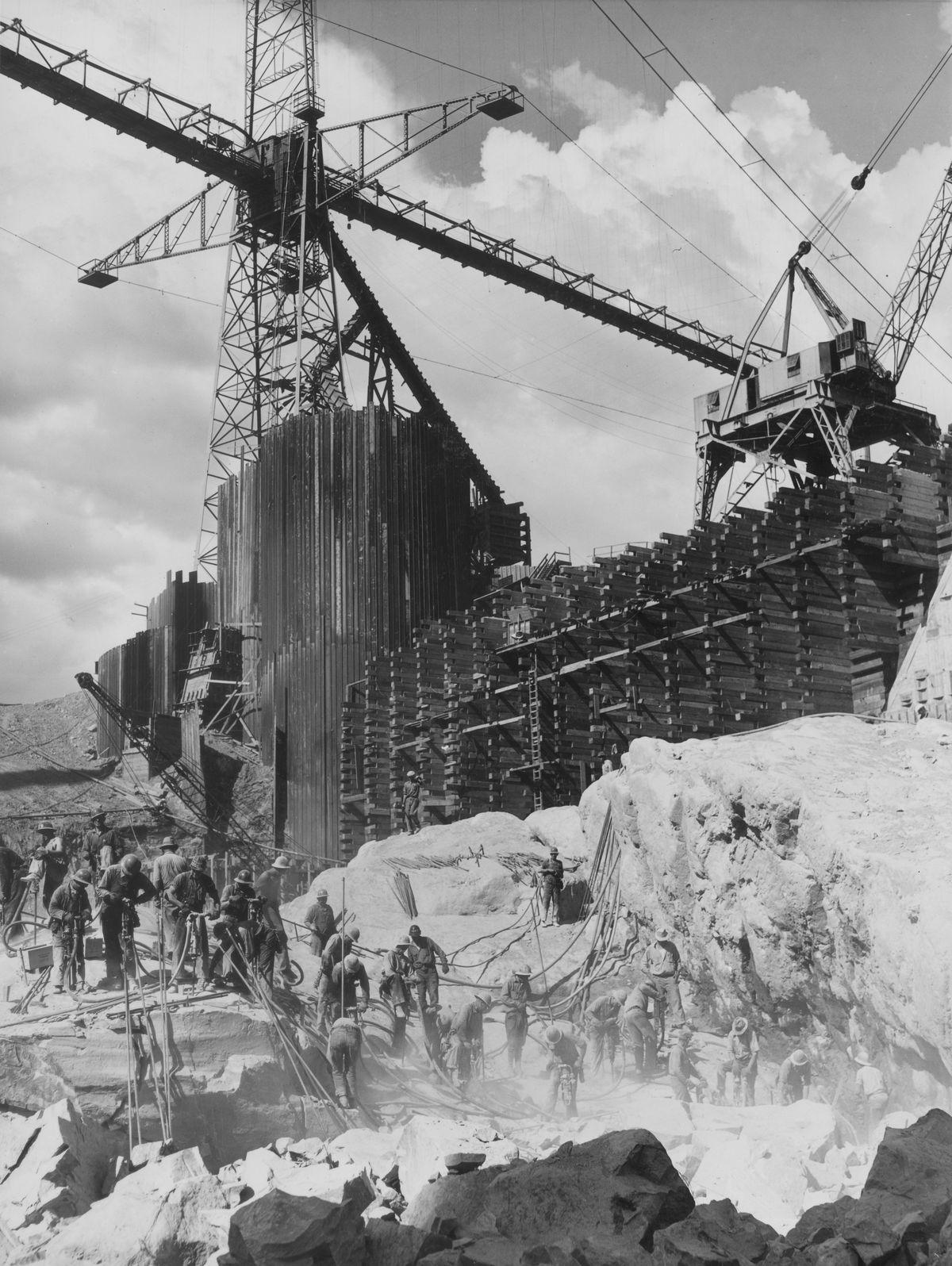Grand power grab
PBS documentary tackles construction, history of Grand Coulee Dam

It contains 11 million cubic yards of concrete – enough to pave a road from New York City to Seattle to Los Angeles and back to the Big Apple. It powered burgeoning cities of Portland and Seattle, and helped fuel America’s success in World War II. It decimated one the world’s greatest salmon fisheries and irreparably damaged an ancient tribal culture.
It’s the Grand Coulee Dam, and it’s the subject of the latest documentary in the PBS series “The American Experience.”
The 90-minute film, premiering Tuesday, features interviews with former dam workers, historians and leaders of the Colville Tribe, and is stitched together by historic photos and film clips. Together, these sources help paint a picture of a project monumental and impressive in scope, with terrible unintended consequences.
The dam, located on the Columbia River about 90 miles northwest of Spokane, now generates an average of 2,300 megawatts a year – enough electricity to power two Seattles.
Among the tidbits we learn:
• Backers in Ephrata, Wash., first discussed the idea of a dam on the Columbia with Wentatchee World publisher Rufus Woods in 1917. Woods and his newspaper would become some of the project’s biggest backers.
• Ground was broken on July 16, 1933, in a ceremony attended by various dignitaries and some 3,000 spectators.
• President Franklin Roosevelt and his wife, Eleanor, visited the site in August 1934.
• The dam’s foundation was completed 14 months ahead of schedule, but 60 men had died in the process.
• At the peak of construction, about 8,000 workers were employed building Grand Coulee.
• By June 14, 1940, as the water behind the dam began to back up, a crowd of tribal members and area residents began to gather at Kettle Falls to mark the loss of the falls and its rich history as an important gathering and fishing spot for area tribes.
• Half of the dam was built on the Colville Indian Reservation, and the creation of Lake Roosevelt left other tribal holdings under water. Yet the Colville Tribe did not receive any payment for the dam for more than 50 years, when the government awarded them a multimillion-dollar settlement. (Not mentioned in the film is the Spokane Tribe, which continues to fight for money members claim they are owed due to loss of traditional fishing grounds.)
• The official dedication ceremony was on March 22, 1941, and drew 8,000 spectators.
• The entire project came in $14 million under budget.
• The documentary does contain one error. It refers to The Wenatchee World, founded in 1905, as the first daily newspaper in Eastern Washington. In fact, by 1890 Spokane had two daily newspapers: The Review became a daily in 1884, and the Spokane Chronicle followed suit in 1886.